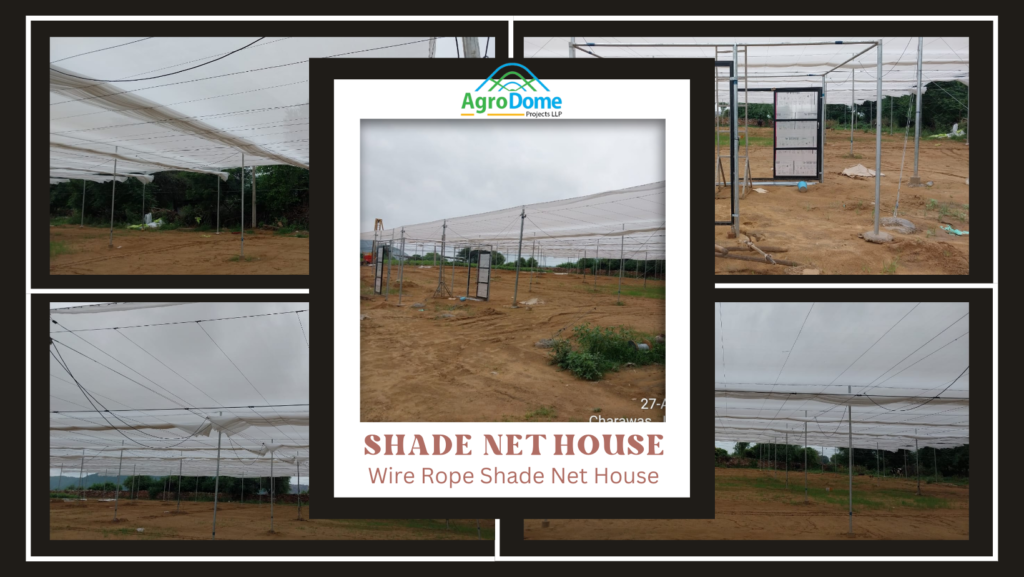We’re thrilled to announce our latest Project in the city of Jhunjhunu, Rajasthan—a state-of-the-art double-layer Wire Rope Net House designed specifically for cucumber cultivation! 🥒
𝗞𝗲𝘆 𝗙𝗲𝗮𝘁𝘂𝗿𝗲𝘀 𝗼𝗳 𝗗𝗼𝘂𝗯𝗹𝗲-𝗟𝗮𝘆𝗲𝗿 𝗪𝗶𝗿𝗲 𝗥𝗼𝗽𝗲 𝗦𝗵𝗮𝗱𝗲 𝗡𝗲𝘁 𝗛𝗼𝘂𝘀𝗲:
– 𝗦𝗾𝘂𝗮𝗿𝗲 𝗔𝗿𝗲𝗮: 3200 sq. meter
– 𝗣𝘂𝗿𝗽𝗼𝘀𝗲: Cucumber Farming
– 𝗖𝗼𝗺𝗽𝗼𝗻𝗲𝗻𝘁𝘀 𝗶𝗻𝗰𝗹𝘂𝗱𝗲𝗱 𝗶𝗻 𝘁𝗵𝗲 𝘀𝘁𝗿𝘂𝗰𝘁𝘂𝗿𝗲: Drip Irrigation, Crop-Support System (Trellising Support System), and Plantation
– 𝗟𝗼𝗰𝗮𝘁𝗶𝗼𝗻: Jhunjhunu, Rajasthan
– 𝗖𝗲𝗻𝘁𝗿𝗲 𝗛𝗲𝗶𝗴𝗵𝘁: 4 mtr
This innovative structure offers robust protection against harsh weather conditions and pests, ensuring a controlled environment for optimal crop growth.
Cucumber farming in a wire rope shade net house offers several benefits, as this type of structure helps control the growing environment more effectively than traditional outdoor cultivation. Here’s a detailed look at how you can manage cucumber cultivation in such a setup:
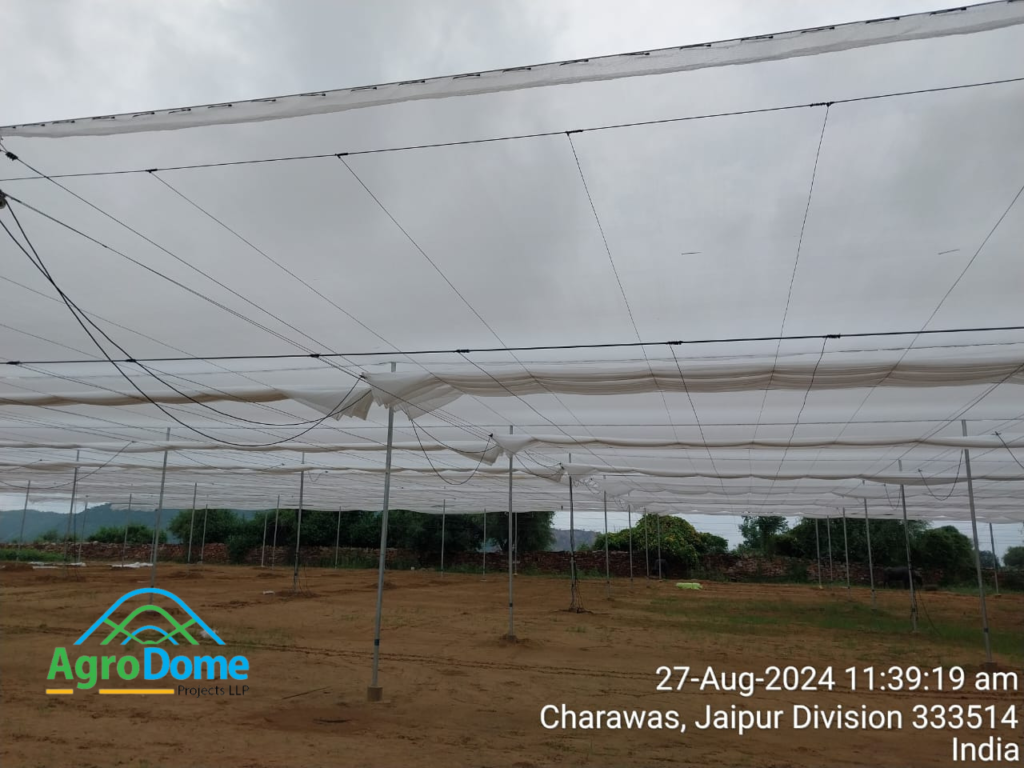
1. Understanding the Wire Rope Shade Net House
Structure and Design:
- Wire Rope Framework: This structure uses a network of wire ropes to support the shade netting. The wire ropes are durable and can bear significant weight, making them ideal for supporting netting and other equipment.
- Shade Netting: Typically made of UV-resistant materials, the shade netting provides partial protection from intense sunlight and helps maintain an optimal temperature inside the house.
- Ventilation: Ensure adequate ventilation to prevent overheating and allow for air circulation. This can be achieved with adjustable side nets, roof vents, or exhaust fans.
2. Benefits of Cultivating Cucumbers in a Wire Rope Shade Net House
- Temperature Control: The shade net reduces direct sunlight’s intensity, which helps maintain a more stable and favorable temperature for cucumber plants.
- Reduced Pest Issues: The netting helps keep out many pests and insects that could otherwise harm your crops.
- Enhanced Growth: Cucumbers can grow more vigorously under controlled conditions, leading to potentially higher yields.
- Extended Growing Season: You can potentially grow cucumbers year-round or extend the growing season beyond the usual outdoor period.
3. Cultivation Practices
Soil Preparation:
- Use well-draining soil rich in organic matter. Cucumbers prefer slightly acidic to neutral pH levels (6.0 to 7.0).
- Consider raised beds or containers if soil quality is a concern.
Planting:
- Spacing: Plant cucumbers with sufficient spacing (typically 30-36 inches apart) to allow for their vining habit.
- Support: Use trellises or vertical growing systems to keep the vines off the ground, which can help in managing diseases and making harvesting easier.
Watering:
- Cucumbers need consistent moisture. Drip irrigation systems are ideal in a net house setting as they provide even and controlled watering.
- Avoid overhead watering to reduce the risk of foliar diseases.
Fertilization:
- Use a balanced fertilizer high in potassium and phosphorus, with moderate nitrogen. Cucumbers are heavy feeders and benefit from regular feeding.
Temperature and Humidity Management:
- Maintain temperatures between 70-85°F (21-29°C) for optimal growth.
- Monitor and manage humidity levels to prevent fungal diseases. Use dehumidifiers or ventilation systems as needed.
Pruning and Training:
- Prune plants to remove excess foliage and focus energy on fruit production.
- Train vines to grow upward using trellises or strings attached to the wire ropes.
Pest and Disease Management:
- Regularly inspect plants for signs of pests such as aphids, spider mites, and whiteflies.
- Implement integrated pest management (IPM) strategies, including beneficial insects and organic treatments if necessary.
Harvesting:
- Harvest cucumbers when they are firm and green. Picking them regularly encourages the plant to produce more fruit.
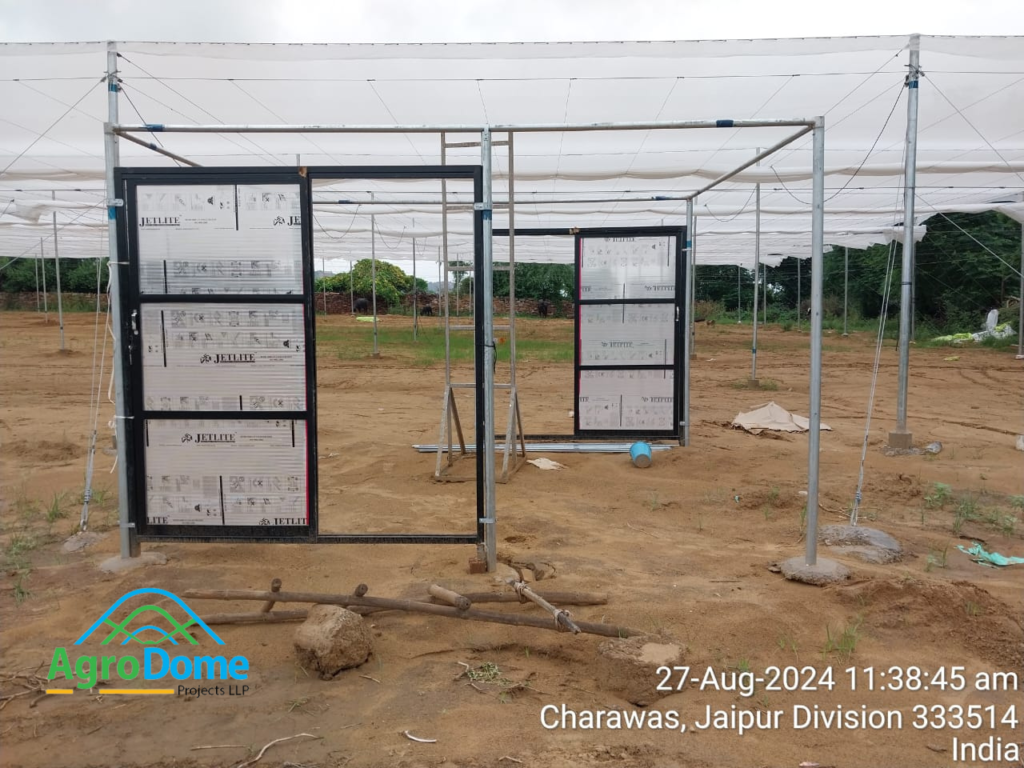
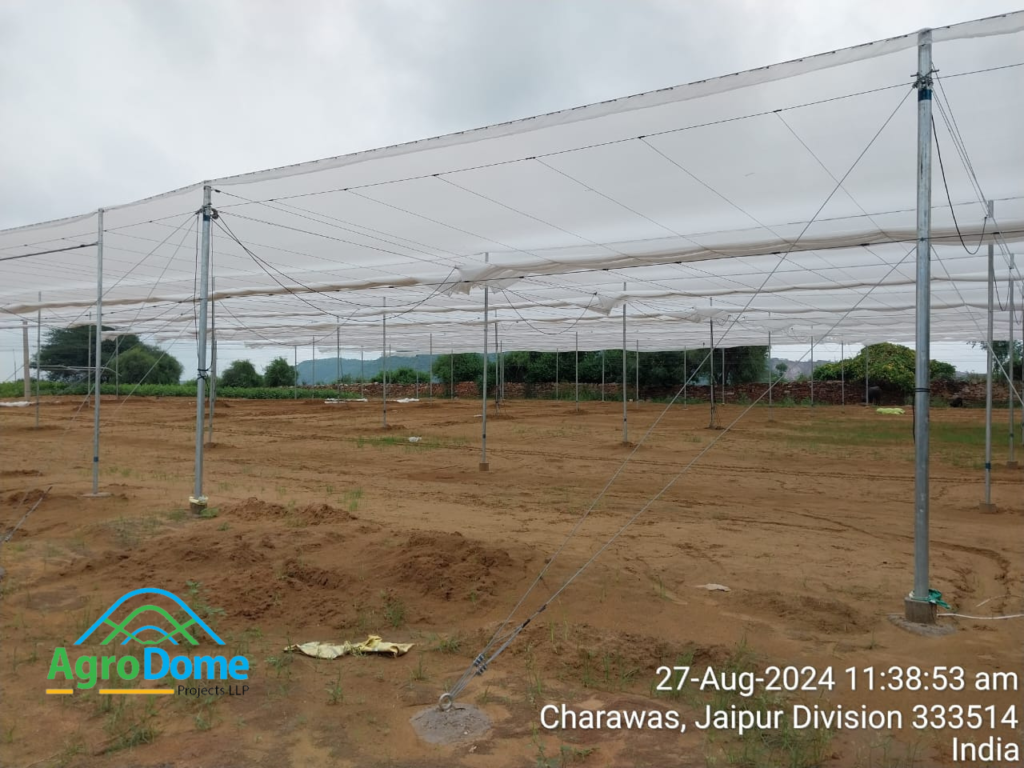
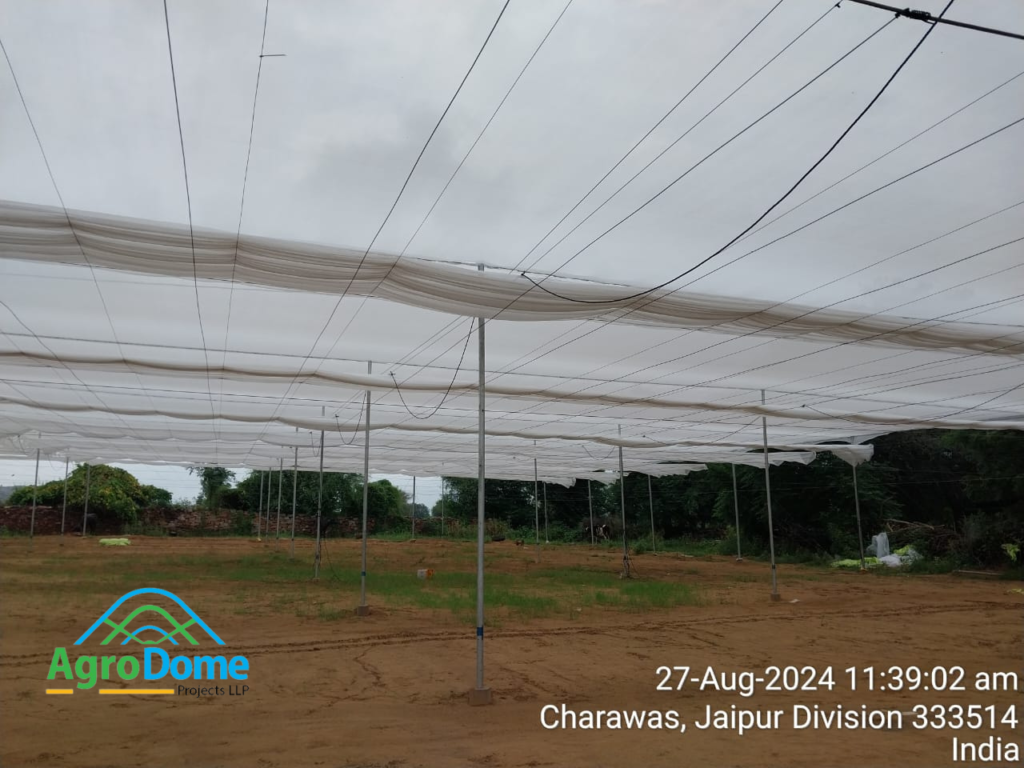
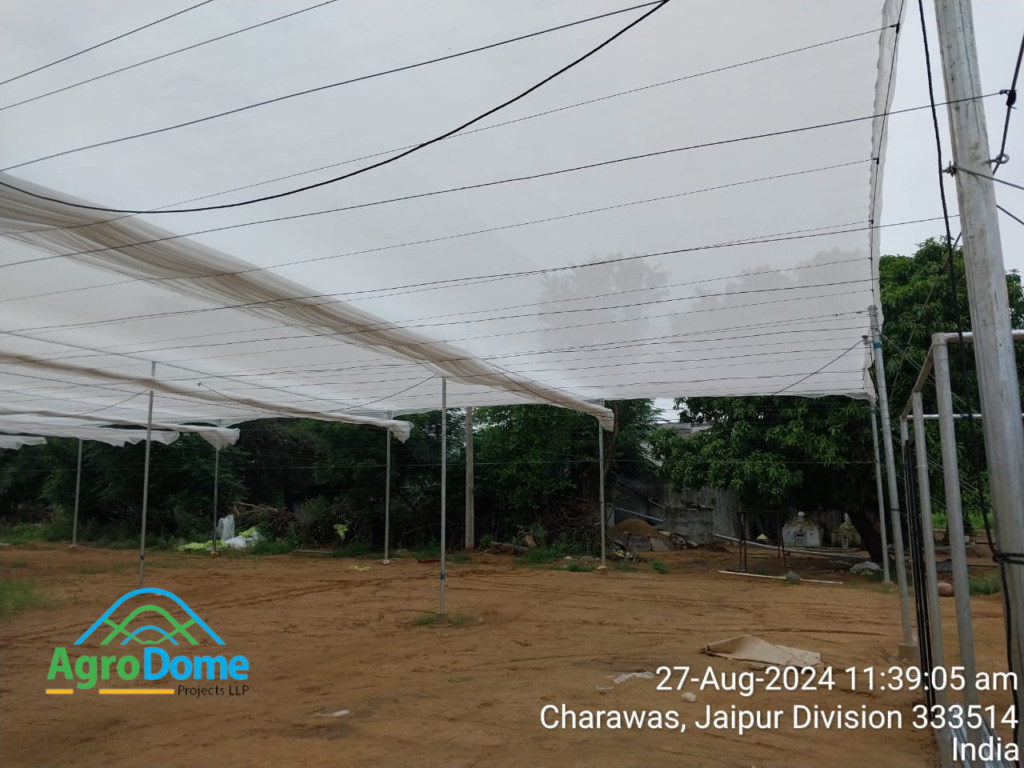
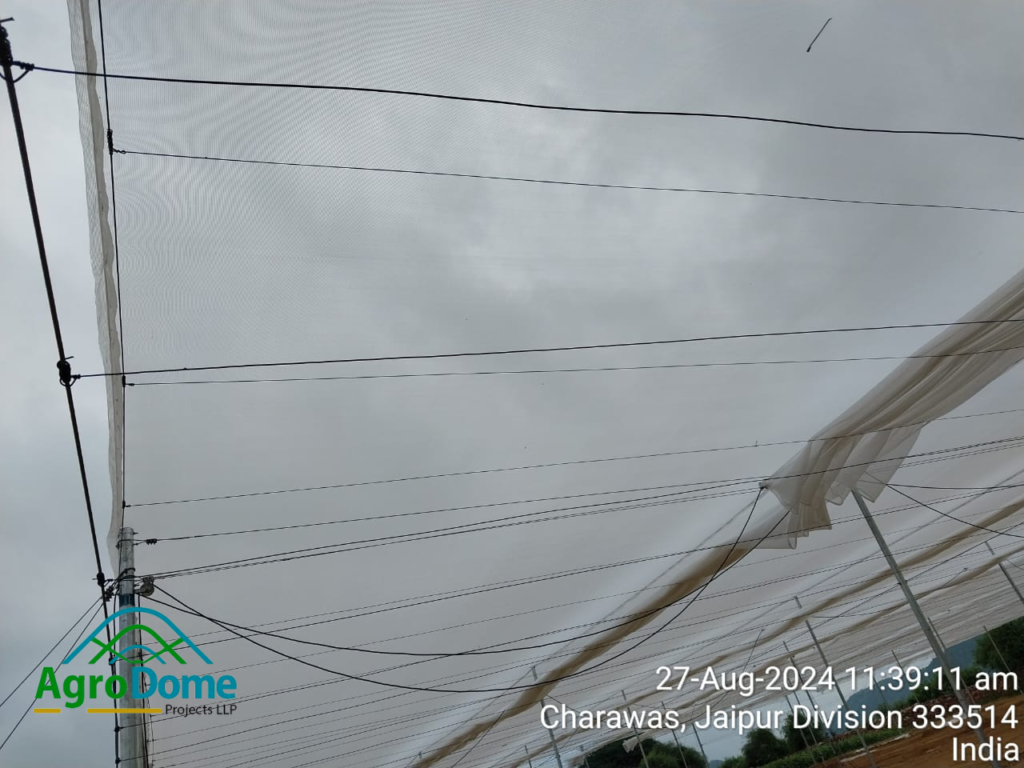
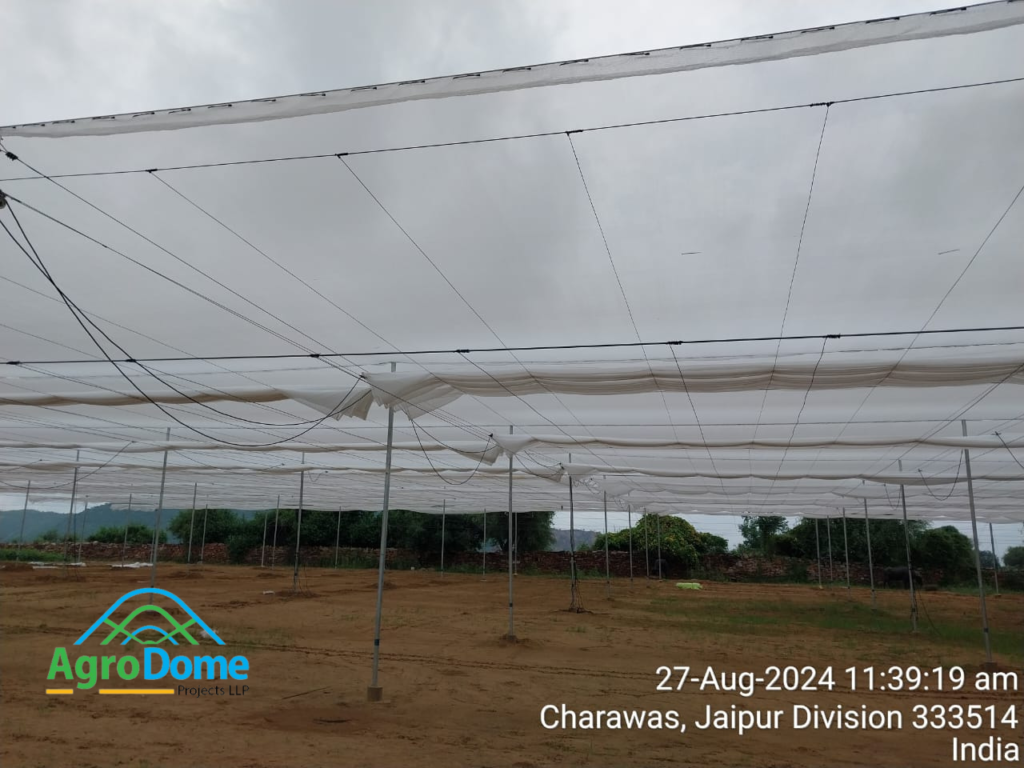
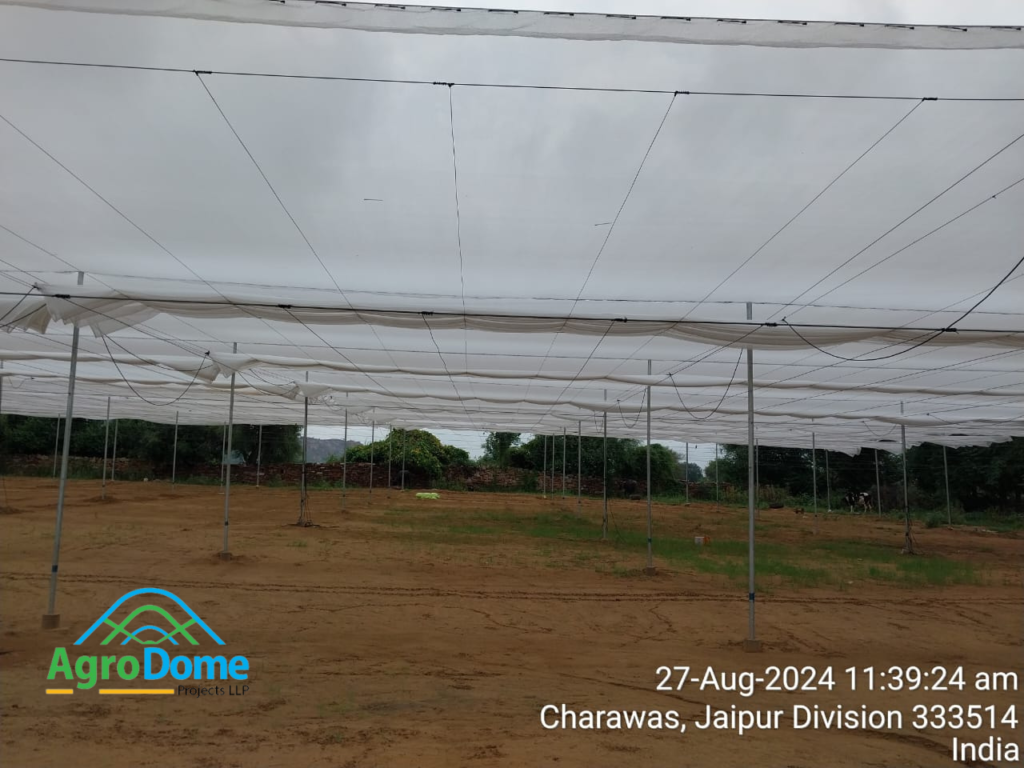
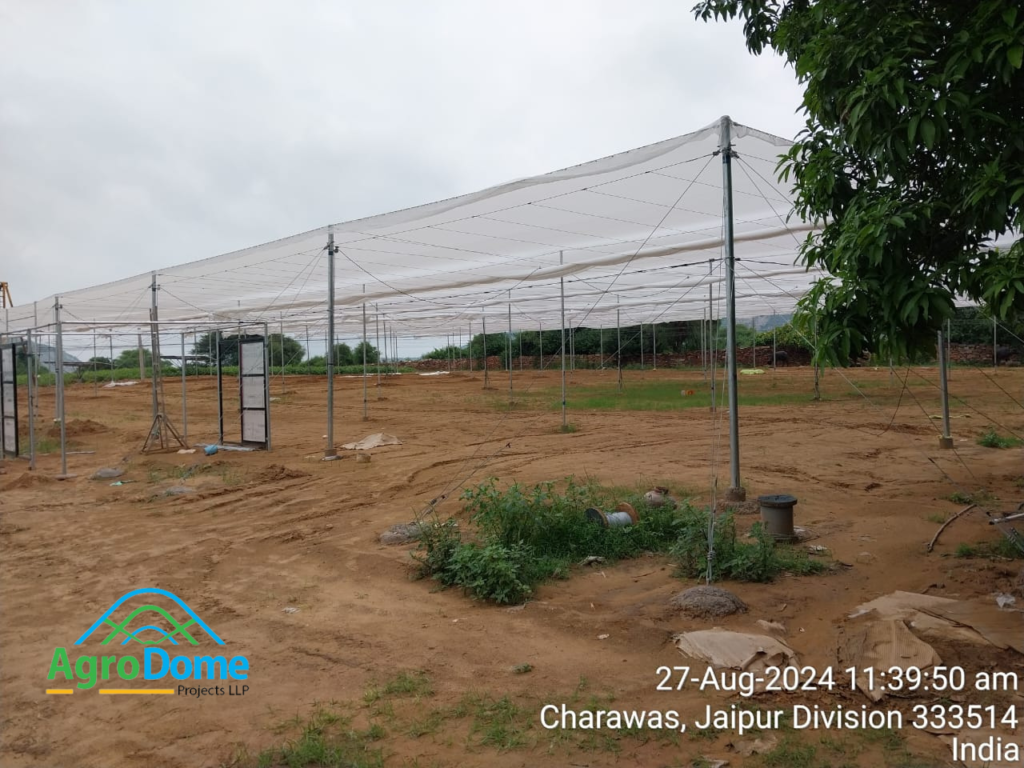
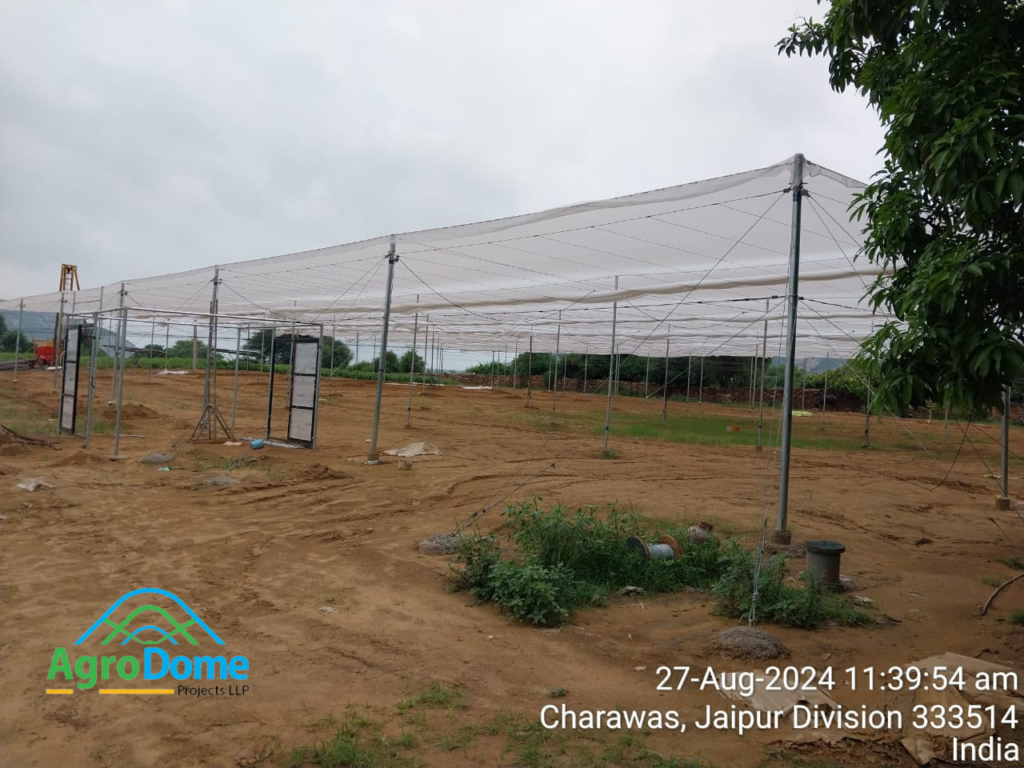
4. Maintenance and Care
Regular Inspections:
- Check the netting and wire ropes for any signs of damage and repair as needed.
- Ensure that ventilation systems and irrigation are functioning properly.
Cleaning:
- Regularly clean the inside of the net house to reduce the risk of diseases and pests.
Seasonal Adjustments:
- Adjust the shade netting or ventilation based on seasonal changes to optimize growing conditions year-round.
By following these guidelines, you can effectively cultivate cucumbers in a wire rope shade net house, leading to a productive and high-quality harvest.
We’re passionate about pushing the boundaries of agricultural innovation, and this project is a testament to our commitment to sustainable and profitable farming solutions. We can’t wait to see the fresh, healthy cucumbers that will be harvested from this high-tech setup! 🍃
Stay tuned for more updates as we bring this project to life and help our client reap the rewards productive farming system.
𝗙𝗼𝗹𝗹𝗼𝘄 𝘂𝘀 𝗳𝗼𝗿 𝗺𝗼𝗿𝗲:
𝗖𝗼𝗻𝘁𝗮𝗰𝘁 𝘂𝘀 𝗼𝗻: +91 9898173376, +91 9033003264
𝗪𝗿𝗶𝘁𝗲 𝘁𝗼 𝘂𝘀 𝗮𝘁: info@agrodome.in
𝗪𝗲𝗯𝘀𝗶𝘁𝗲: www.agrodome.in
𝗦𝗼𝗰𝗶𝗮𝗹 𝗺𝗲𝗱𝗶𝗮 𝗵𝗮𝗻𝗱𝗹𝗲: https://lnkd.in/dTaj7wrE
#farming #ShadeNetHouse #AgricultureInnovation #SustainableFarming #farming #agriculture #shadenet #greenhouse #polyhouse #occupation #FruitCultivation
#AgriTeh #FarmingSolutions #CropManagement #SustainableAgriculture #marigold #agrodome #dripirrigation #irrigation #fruits #fruitfarming #vegetable #vegetablefarming #AgroDomeProjects #CucumberCultivation #WireRopeNetHouse #SustainableFarming #AgriculturalInnovation #GreenhouseFarming #FarmToTable #cropprotection #EfficientIrrigation

